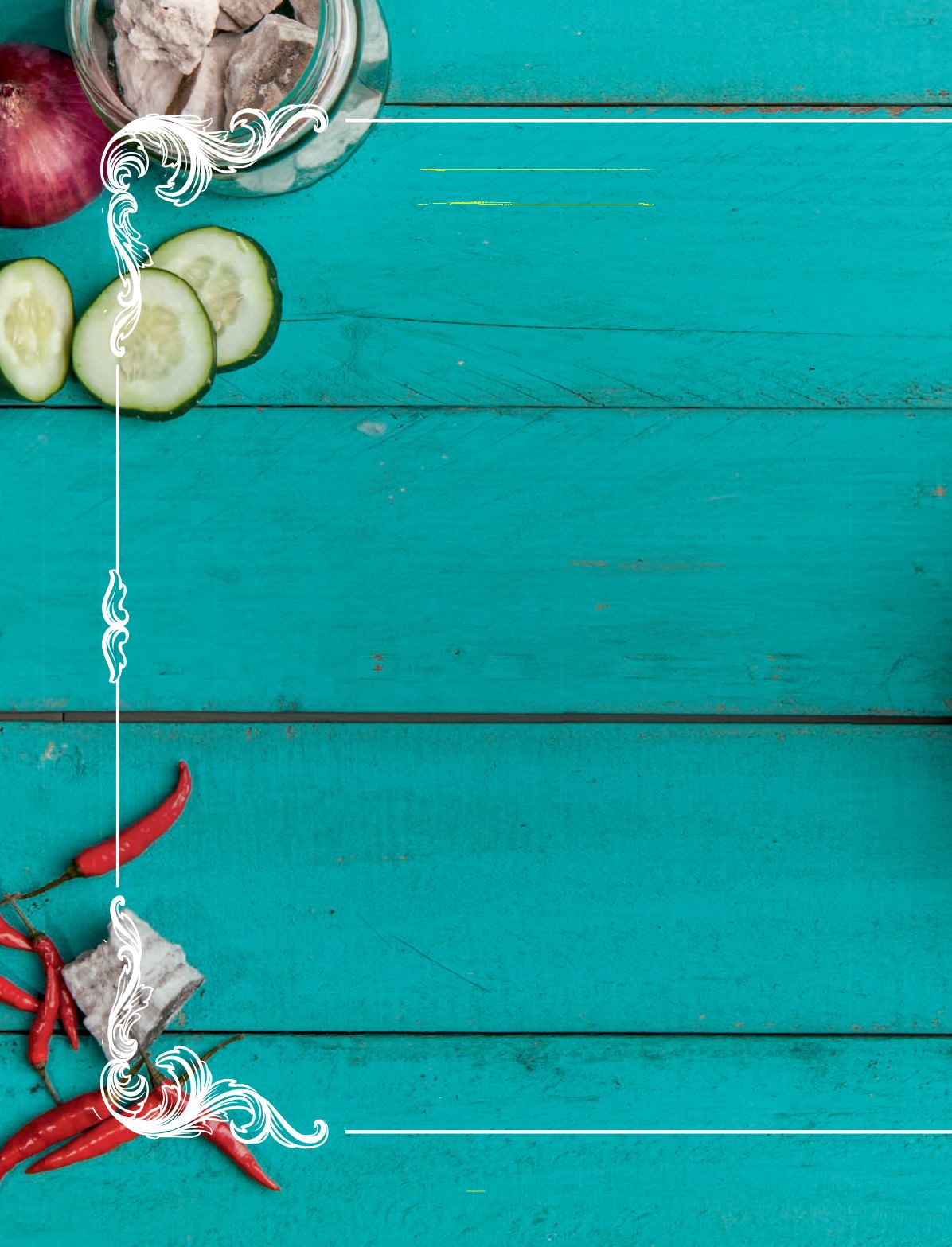
Kinilaw country
Discover why this quintessential Filipino dish is recapturing
imaginations and palates across the archipelago and beyond
A
t the recent Madrid Fusión
gastronomic summit in the Spanish
capital,
kinilaw
— a simple dish of
fresh raw fish cooked in vinegar —
basked in the spotlight, impressing
culinary experts from around the world.
Kinilaw is a versatile dish that, given its many
variations, mirrors the diversity of the Philippines’
topography and cultural heritage. And to homesick
provincianos
inManila, a mere taste of freshly
prepared kinilaw is generally enough to transport
them back to the past, triggering heartfelt accounts
of childhoods spent by the shore or of family
luncheons at a grandmother’s heaving dining table.
Here, Patrick and Pia Roa, the dynamic duo
behind Patricio’s Cevicheria, give us the rundown
on six types of kinilaw from different parts of the
Philippines. They explain what makes each version
of this dish, which bursts with flavor and freshness,
unique.
88
Fresh and fiery
KinilawdeOro
This version of kinilaw fromCagayan
de Oro is renowned as the nation’s
oldest. In fact, it was filling Filipino
bellies even before the arrival of the
Spaniards. It’s a fish kinilaw— the
Roas use tuna — that’s made with
suwa
(aka
biasing
), a species of
fragrant lime endemic to northern
Mindanao and Camiguin.
Tabon-tabon
(a fruit that looks like a dry chico) is
also used, along with
siling labuyo
,
cucumber, ginger, red onions and mild
local vinegar. As with most kinilaw
recipes, the “chop-and-drop” method
of preparation, where a fish fillet is
cubed and the rest of the ingredients
are chopped and combined in a bowl
with vinegar, will more than suffice,
Patrick says.
TEXT AND STYLING BY
TATA MAPA
PHOTOS BY
JAR CONCENGCO


